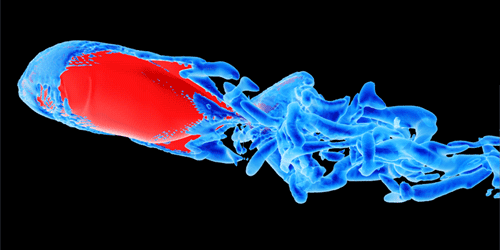Teaching Fish How to Swim
A trout swimming in a creek may appear to have little in common with a blue whale cruising the ocean. Yet most aquatic animals that make use of tail fins adopt surprisingly similar swimming styles, which researchers have characterized with a fluid dynamics term called the Strouhal number ( ). Mehdi Saadat of Harvard University and the University of South Carolina and colleagues now advocate for including a second parameter to more accurately describe fish, dolphins, and whales in action. The result may guide the design of power-efficient aquatic robots.
Existing models relate swimming speed to the frequency and amplitude of the tail beat, the product of which determines the dimensionless quantity . This number falls between 0.2 and 0.4 for most species. Saadat and co-workers, however, argued that a swimmer cannot control , because it is predetermined by the animal’s shape and by drag forces. To investigate the problem further, the team derived general scaling relations that relate the thrust generated by the swimmer to several parameters. They found that the only parameter related to swimming efficiency that fish can control is , the ratio of the tail-beat amplitude to the fish length. Their analysis indicates that, to minimize the power needed to maintain a certain speed, the swimmer must tune between 0.1 and 0.3. In other words, a fish swims most efficiently if the amplitude of its tail beat is 10–30% percent of its body length.
The team tested their theoretical predictions with and values derived from published data and from videos they recorded in their lab. They found that trout, dace, and mackerel as well as various whale, dolphin, and shark species swim with values of and that fall within the range of values identified as optimal by their model.
This research is published in Physical Review Fluids.
–Matteo Rini
Matteo Rini is the Deputy Editor of Physics.





